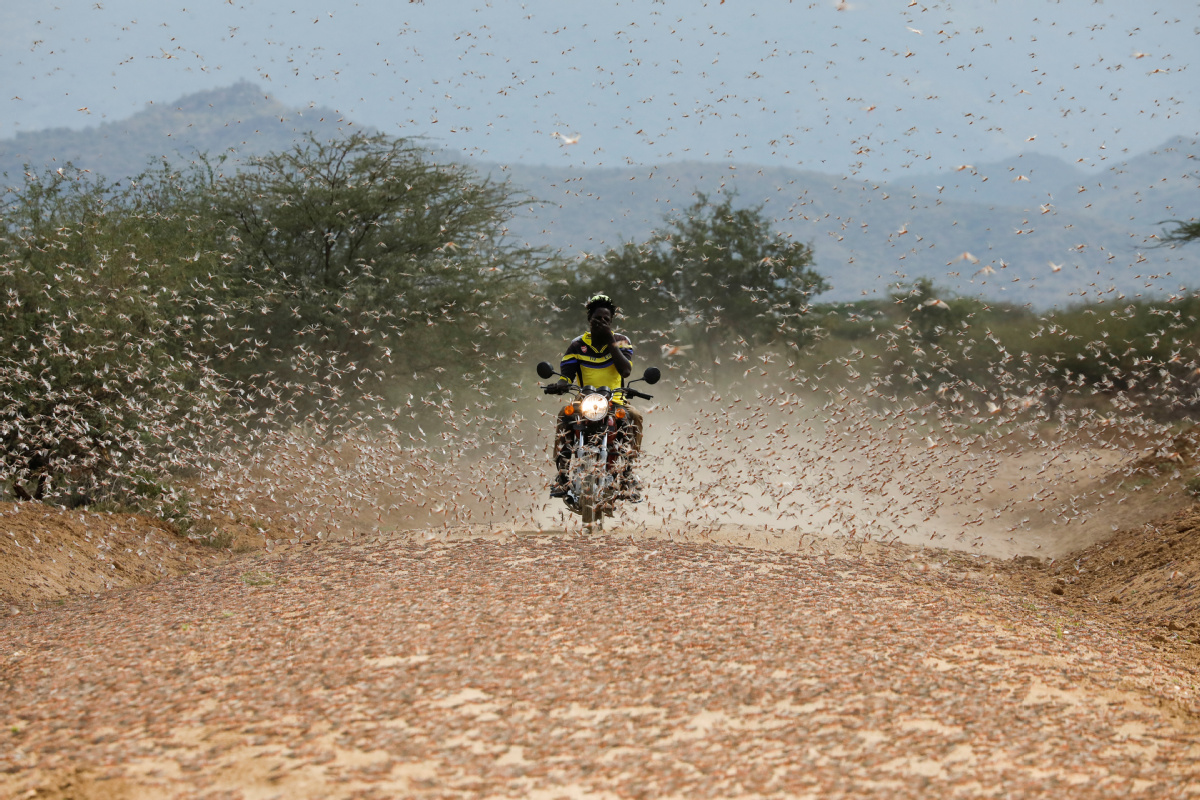East Africa's woes have longer to run


NAIROBI, Kenya-The crunch of young locusts comes with nearly every step. The worst outbreak of the voracious insects in Kenya in 70 years is far from over, and their newest generation is now finding its wings for proper flight.
The livelihoods of millions of already vulnerable people in East Africa are at stake, and people like Boris Polo are working to limit the damage. The logistician with a helicopter firm is on contract with the United Nations Food and Agriculture Organization, or FAO, helping to find and mark locust swarms for the targeted pesticide spraying that has been called the only effective control.
"It sounds grim because there's no way you're gonna kill all of them because the areas are so vast," he told The Associated Press from a field in northwestern Kenya on July 3.
"But the key of the project is to minimize" the damage, and the work is definitely having an effect, he said.
ICPAC, a researcher center of the regional Inter-Governmental Authority on Development, said:"The risk of significant impact to both crops and rangelands is very high."
For months, a large part of East Africa has been caught in a cycle with no end in sight as millions of locusts became billions, nibbling away the leaves of both crops and the brush that sustains the livestock so important to many families.
For now, the young yellow locusts cover the ground and tree trunks like a twitching carpet, sometimes drifting over the dust like giant grains of sand.































